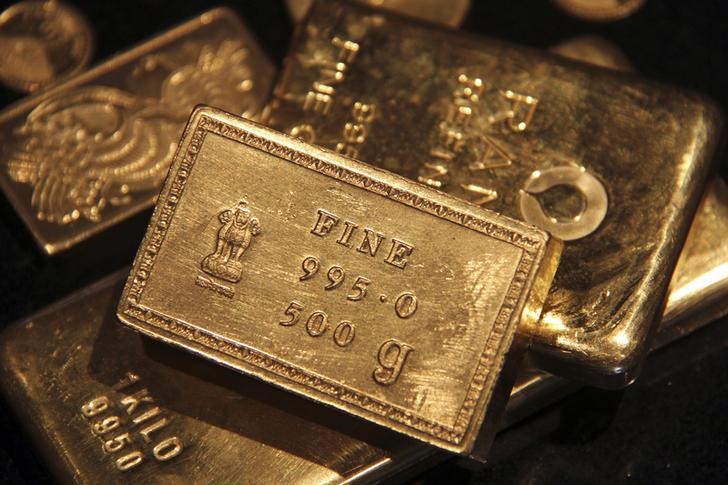By Barani Krishnan
Investing.com - What fears over China couldn't achieve, worries over Mexico have done.
Bullion and futures of gold returned to the key bullish $1,300 mark on Friday as equity markets cratered and benchmark U.S. Treasury yields tumbled after President Donald Trump's move to add Mexico to the U.S. list of trade adversaries.
Spot gold, reflective of trades in bullion, traded at $1,304.81 per ounce by 2:35 PM ET (18:35 GMT), up $16.34, or 1.3%. It hit a seven-week high of $1,307.02 earlier. For the whole of May, spot gold was up 1.7%.
Gold futures for June delivery, traded on the Comex division of the New York Mercantile Exchange, settled up $18.70, or 1.5%, at $1,305.80 per ounce. Comex's more active August gold, the forthcoming front-month contract, also closed up $18.70, or 1.4%, at $1,311.10.
The Trump administration announced on Thursday it will impose a 5% tariff on all imported goods from Mexico beginning June 10 and “gradually increase” that tax to 25% until the flow of undocumented immigrants across the border stops. Trump later tweeted that stopping the flow of illegal drugs may also be a condition, while having companies move production to the U.S. to avoid tariffs was also part of the surprise plan.
The biggest trade war waged by the U.S. is, of course, with China with the more-than year-long showdown already threatening to push the world into a recession as neither side shows signs of blinking. Aside from the showdowns with China and Mexico, the Trump administration has also removed India – another giant economy with more than 1 billion consumers – from the U.S. Generalized System of Preferences, which gives favorable access to goods from developing countries.
While gold has been the safe haven of choice in times of political and economic troubles, where U.S.-China trade is concerned the yellow metal has faced much competition from the U.S. dollar. That has prevented gold from progressing past, or even staying in, $1,300 territory.
For a third day in a row, gold rose together with the U.S. dollar before the greenback eventually gave back its early gains. The dollar index, which measures the U.S. currency against a basket of six currencies, slid 0.4% to 97.708. For all of May, the dollar was up 0.5%.
"Gold finally reached the $1,300 area even with dollar strength as global growth is threatened by tariffs," George Gero, precious metals analyst at RBC Wealth Management, said, citing "tariffs on car parts that come from Mexico, that could hurt future sales, with higher prices passed on to consumers" as the trigger for the move.
"The Fed may be forced to look deeper into cutting rates instead of hiking," Gero added.
With worries about a potential global recession arising from Trump's various trade wars, economists have been speculating again that the U.S. central bank may be forced into a new round of economic easing. Fed funds futures have priced in roughly two U.S. rate cuts by the start of next year as the yield curve between 3-month bills and 10-year notes remained inverted. Three-month treasurys were yielding 2.29% on Friday; the 10-year treasury yield was just 2.14% and is down 20% this year.
Inflation has been running below levels targeted by the Fed, placing Chairman Jerome Powell under the scrutiny of Trump again. Trump's been pushing for lower interest rates. Powell said recently he believed the soft inflation environment "may wind up being transient."
Elsewhere in metals, palladium fell after a four-day rally on worry over the Mexico tariffs, although the silvery-white auto-component metal retained its standing as the world's costliest traded metal.
Spot palladium fell $35.25, or 2.6%, to $1,333.95 an ounce. It fell nearly 3.5% in May, its third-straight negative month, though it remains up 5% on the year.
Trades in other Comex metals as of 2:35 PM ET (18:45 GMT):
Palladium futures down $34.55, or 2.5%, at $1,331.15 per ounce.
Platinum futures down $1.00, or 0.1%, at $793.10 per ounce.
Silver futures up 7 cents, or 0.5%, at $14.56 per ounce.
Copper futures down 2 cents, or 0.7%, at $2.64 per pound.
